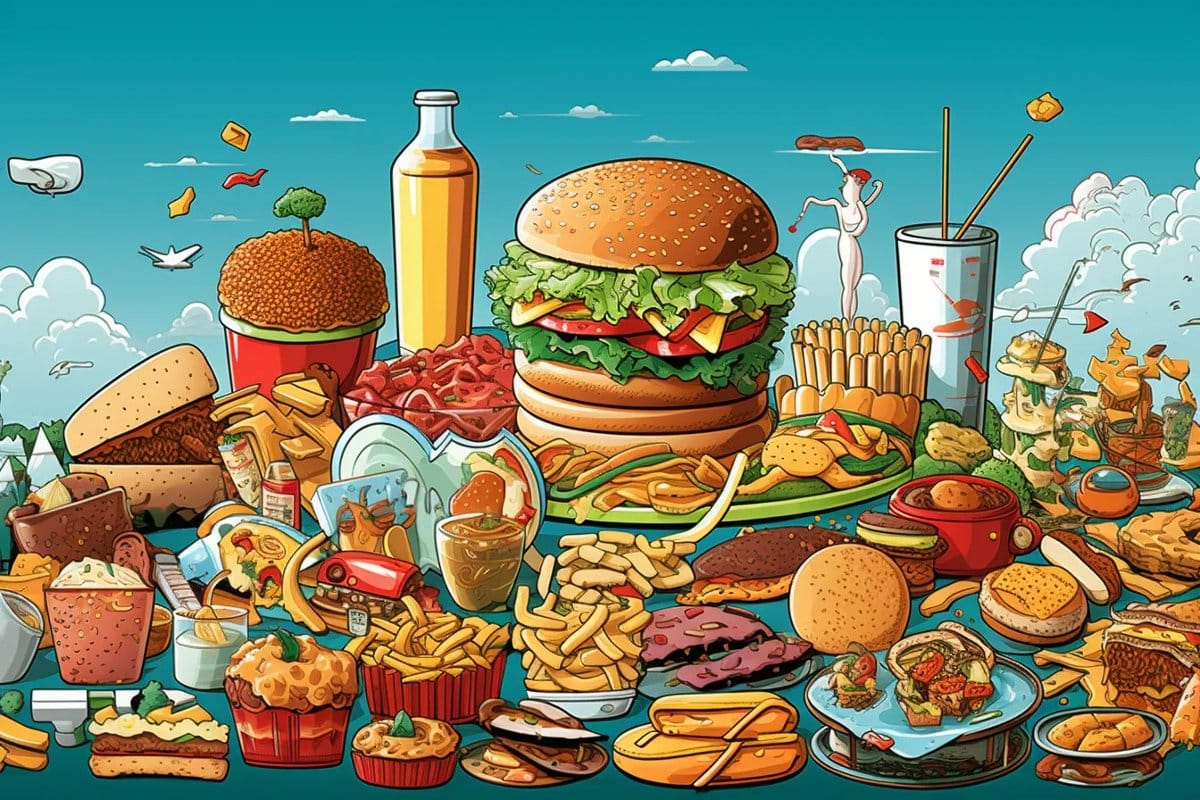Summary: A new study challenges prevailing assumptions about food preferences, particularly regarding ultra-processed foods (UPFs).
Engaging 224 adults, the study analyzed responses to images of 52 familiar foods, assessing factors like energy density, processing level, and carbohydrate-to-fat ratio. Surprisingly, UPFs were not found to be more likable or desirable than less processed options. Instead, foods with balanced carbohydrate and fat content and higher taste intensity, but lower fiber content, were more favored.
This research suggests that our inherent preferences might be geared towards maximizing calorie intake over fullness, a trait adaptive in fluctuating food availability but problematic in modern contexts of food abundance.
Key Facts:
- Contrary to common belief, UPFs were not more liked or desired than less processed foods.
- Foods with a balanced carbohydrate-to-fat ratio and higher taste intensity were more preferred.
- The study proposes that humans innately prefer foods that are less filling but calorie-dense, reflecting an evolutionary adaptation for maximizing calorie intake.
Source: University of Bristol
The study, led by Bristol’s Nutrition and Behaviour Group, wanted to test the common but largely untested assumptions that food energy density (calories per gram), level of processing, and carbohydrate-to-fat ratio are key factors influencing food liking and desirability.
In the experiment, involving 224 adult volunteers, participants were presented with colour images of between 24 and 32 familiar foods, varying in energy density, level of processing (including UPFs), and carbohydrate-to-fat ratio. There were 52 different foods in total, including avocado, grapes, cashew nuts, king prawns, olives, blueberry muffin, crispbread, pepperoni sausage, and ice cream.
Participants were then asked to rate the foods for taste pleasantness (liking), desire to eat, sweetness, and saltiness while imagining tasting them. The validity of this method was confirmed by, for example, finding a strong relationship between sweetness ratings and food sugar content.
Results from the study showed that, on average, UPFs were no more liked or desired than processed or unprocessed foods. However, foods that combined more equal amounts (in calories) of carbohydrate and fat, were more liked and desired than foods containing the same number of calories mostly as carbohydrate, or mostly as fat. This is known, from previous research, as the ‘combo’ effect.
Further results revealed that foods with higher amounts of dietary fibre were less liked and desired, and foods tasting more intense (mainly related to the level of sweetness and saltiness), were more liked and desired.
Professor Peter Rogers in the School of Psychological Science and the study’s lead author, commented that the results for UPFs were surprising. He said: ”Our results challenge the assumption that ultra-processed foods are ‘hyperpalatable’, and it seems odd that this has not been directly tested before.
“However, whilst ultra-processing didn’t reliably predict liking (palatability) in our study, food carbohydrate-to-fat ratio, food fibre content, and taste intensity did – actually, together, these three characteristics accounted for more than half of the variability in liking across the foods we tested.
“The results for sweetness and saltiness, are consistent with our innate liking for sweetness and saltiness. And the results for carbohydrate-to-fat ratio and fibre might be related to another important characteristic that determines food liking.
“Our suggestion is that humans are programmed to learn to like foods with more equal amounts of carbohydrate and fat, and lower amounts of fibre, because those foods are less filling per calorie. In other words, we value calories over fullness.
“In turn, this trait helps us to maximise calorie intake and build up fat reserves when food is abundant – which is adaptive in circumstances when food supplies are uncertain or fluctuate seasonally, but not when food is continuously available in excess of our immediate needs.”
The Nutrition and Behaviour Group are currently testing the calories versus fullness idea in further studies of food liking and meal preferences, including across different countries and cuisines.
Funding: This research was funded by the University of Bristol’s School of Psychological Science.
About this neuroscience and diet research news
Author: Joanne Fryer
Source: University of Bristol
Contact: Joanne Fryer – University of Bristol
Image: The image is credited to Neuroscience News
Original Research: Open access.
“Evidence that carbohydrate-to-fat ratio and taste, but not energy density or NOVA level of processing, are determinants of food liking and food reward” by Peter Rogers et al. Appetite
Abstract
Evidence that carbohydrate-to-fat ratio and taste, but not energy density or NOVA level of processing, are determinants of food liking and food reward
This virtual (online) study tested the common but largely untested assumptions that food energy density, level of processing (NOVA categories), and carbohydrate-to-fat (CF) ratio are key determinants of food reward.
Individual participants (224 women and men, mean age 35 y, 53% with healthy weight, 43% with overweight or obesity) were randomised to one of three, within-subjects, study arms: energy density (32 foods), or level of processing (24 foods), or CF ratio (24 foods). They rated the foods for taste pleasantness (liking), desire to eat (food reward), and sweetness, saltiness, and flavour intensity (for analysis averaged as taste intensity).
Against our hypotheses, there was not a positive relationship between liking or food reward and either energy density or level of processing. As hypothesised, foods combining more equal energy amounts of carbohydrate and fat (combo foods), and foods tasting more intense, scored higher on both liking and food reward.
Further results were that CF ratio, taste intensity, and food fibre content (negatively), independent of energy density, accounted for 56% and 43% of the variance in liking and food reward, respectively. We interpret the results for CF ratio and fibre in terms of food energy-to-satiety ratio (ESR), where ESR for combo foods is high, and ESR for high-fibre foods is low.
We suggest that the metric of ESR should be considered when designing future studies of effects of food composition on food reward, preference, and intake.

Rachel Carter is a health and wellness expert dedicated to helping readers lead healthier lives. With a background in nutrition, she offers evidence-based advice on fitness, nutrition, and mental well-being.




.jpg)



